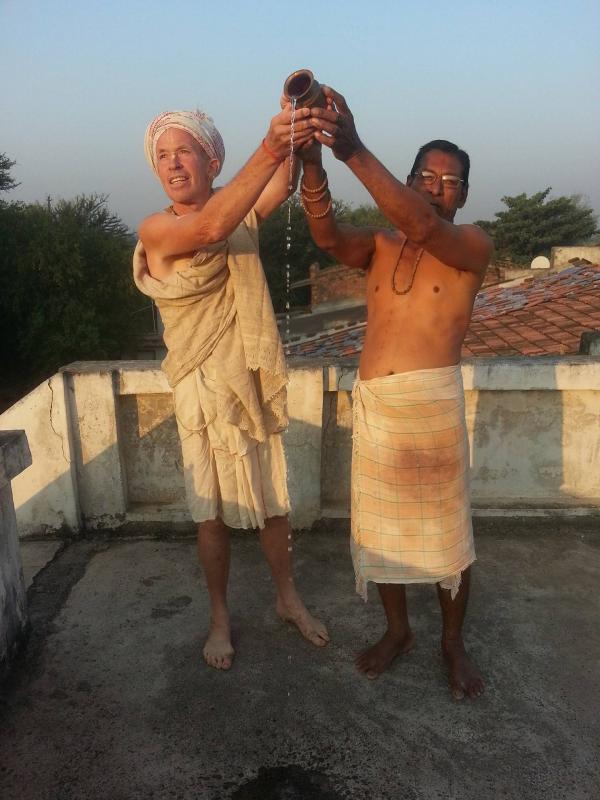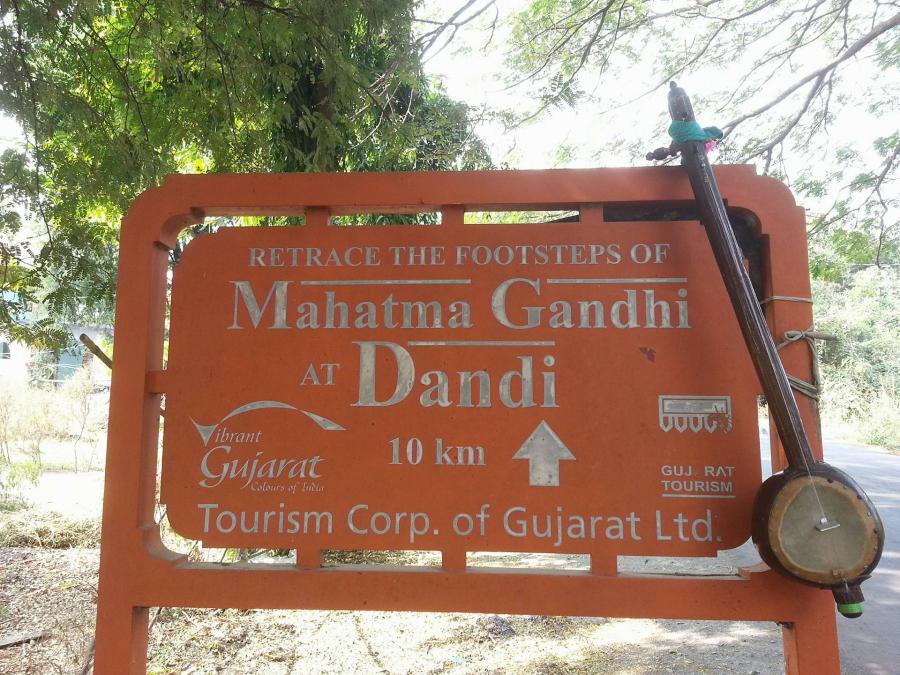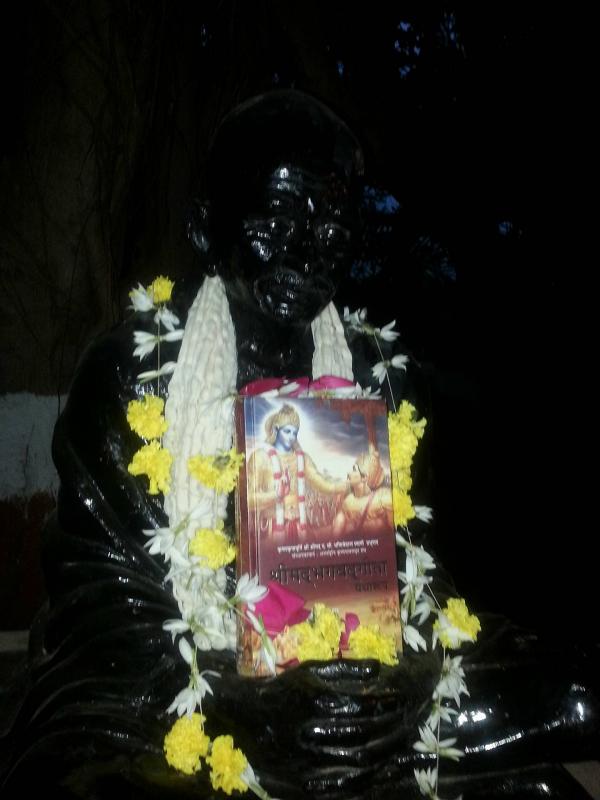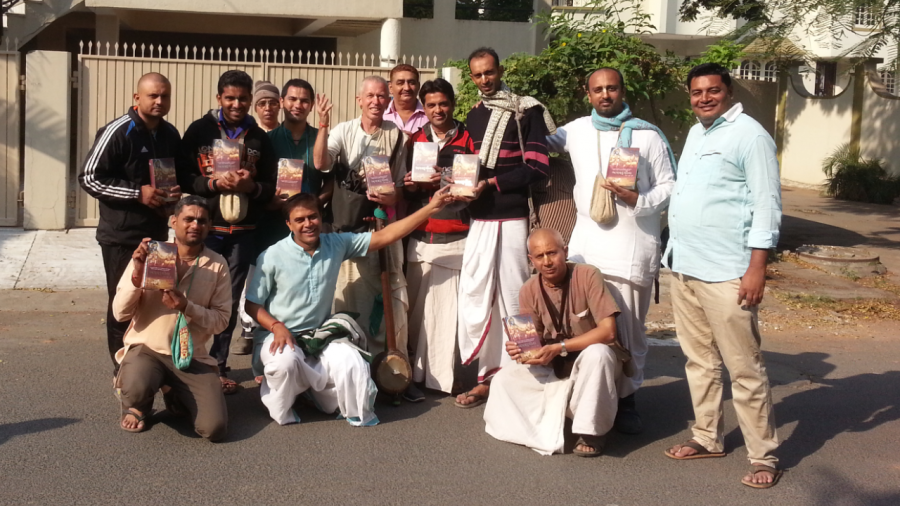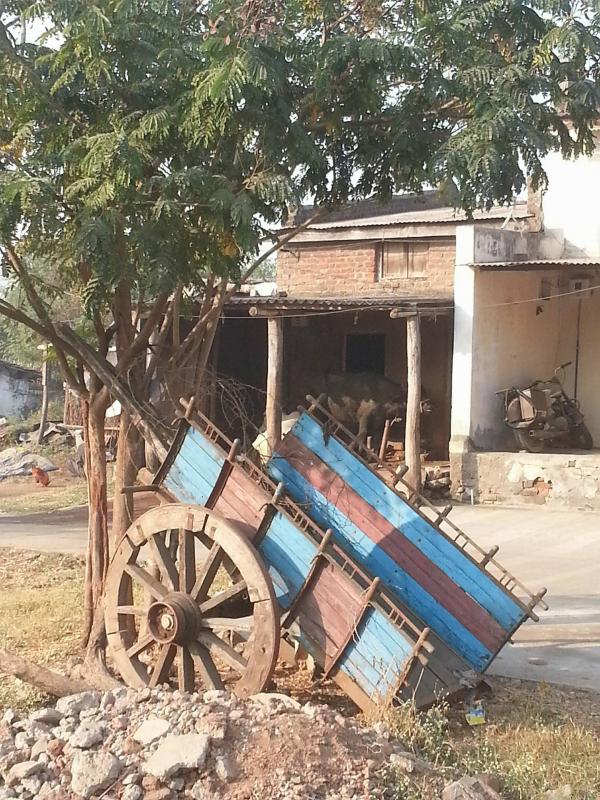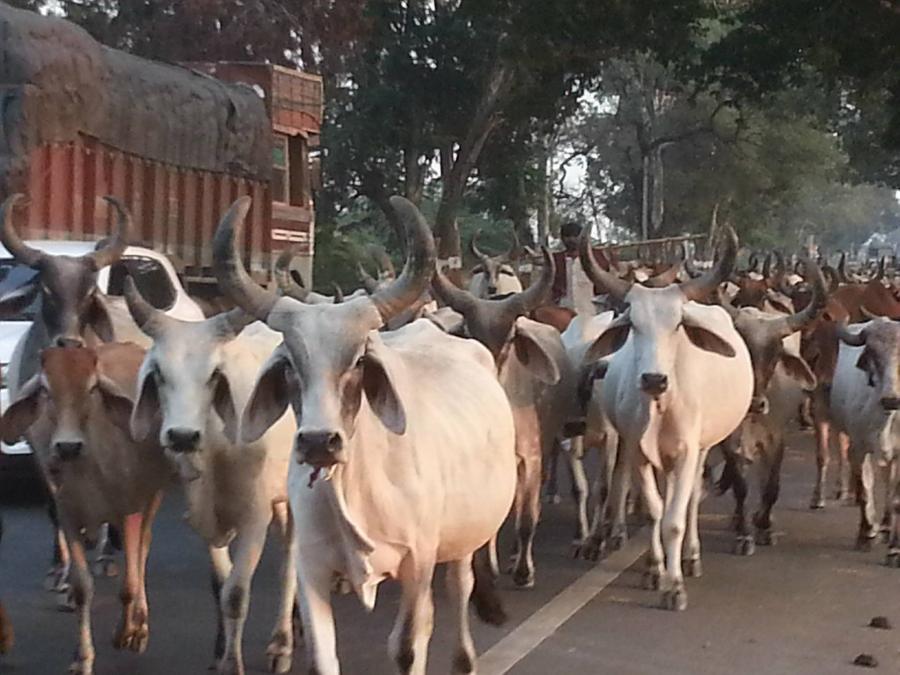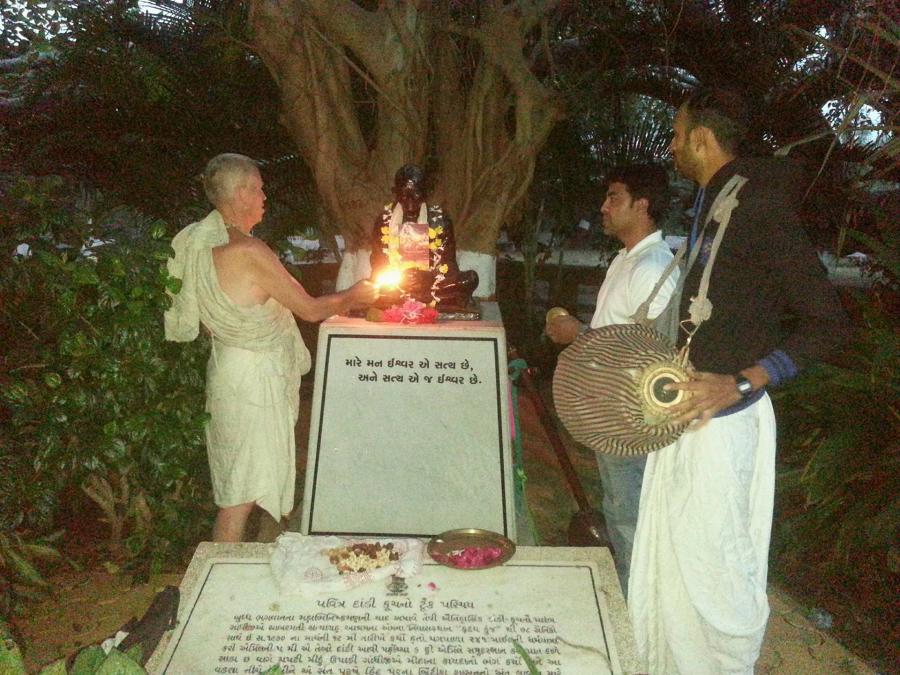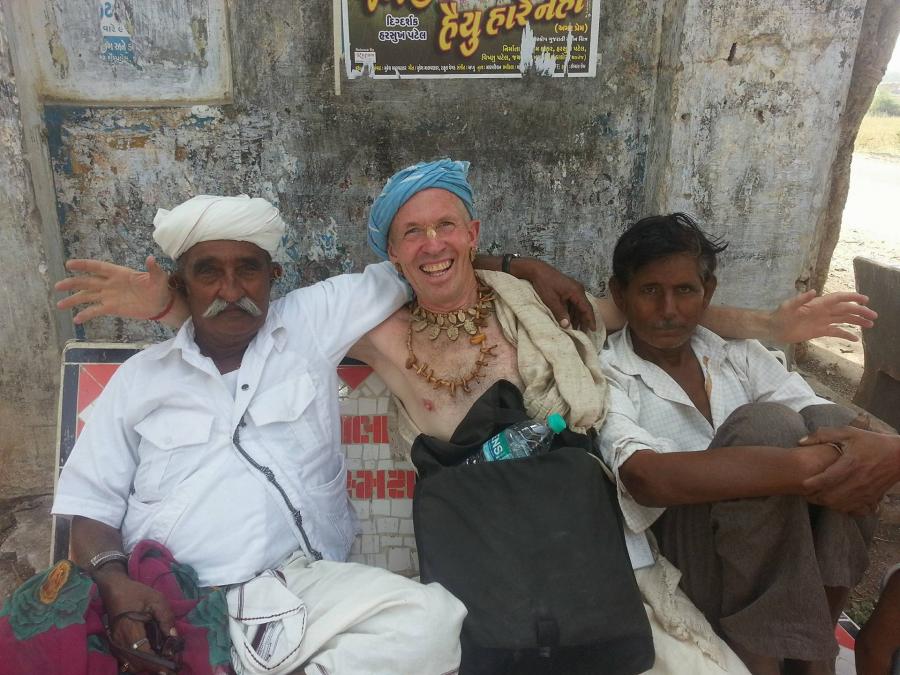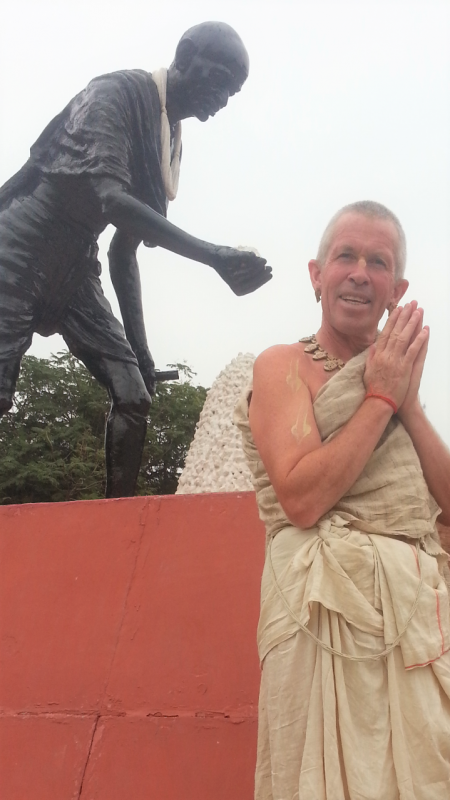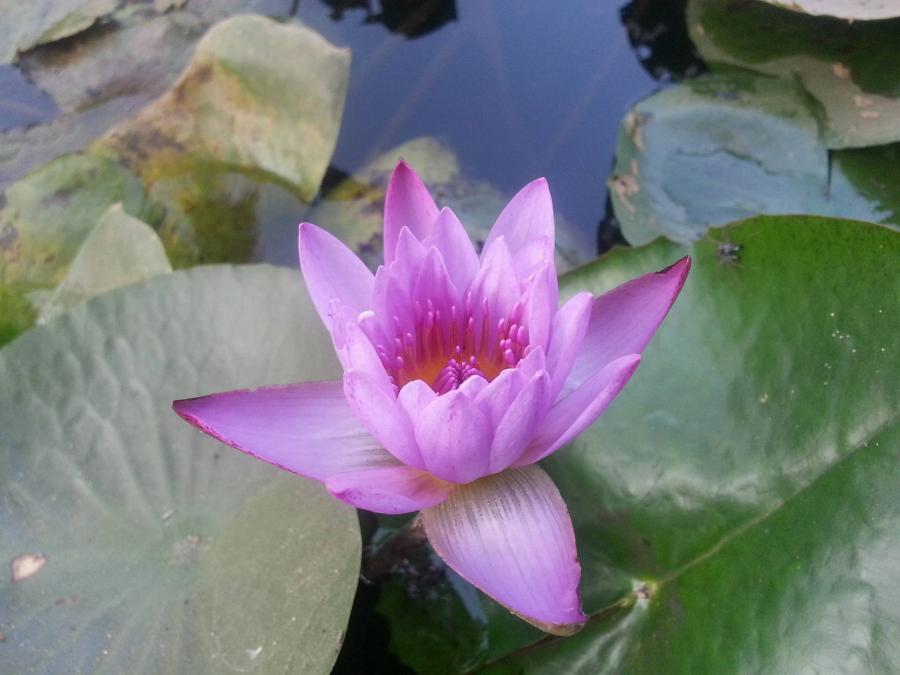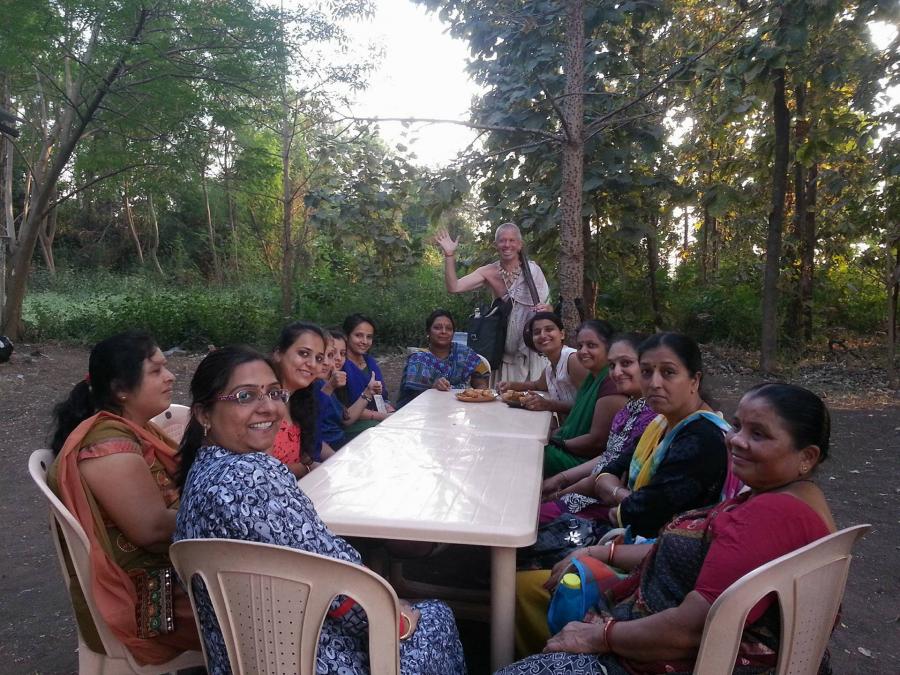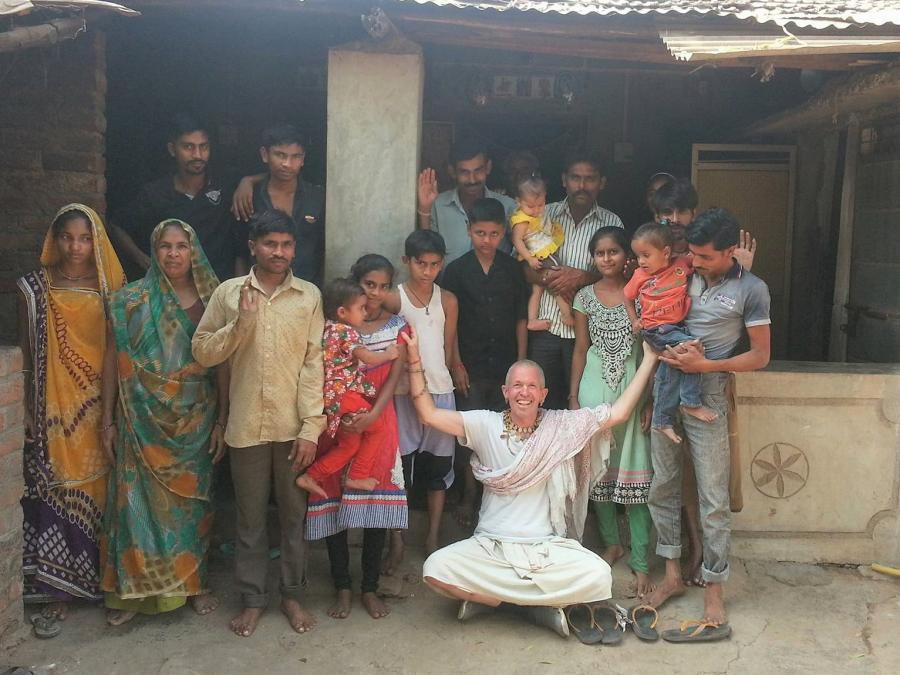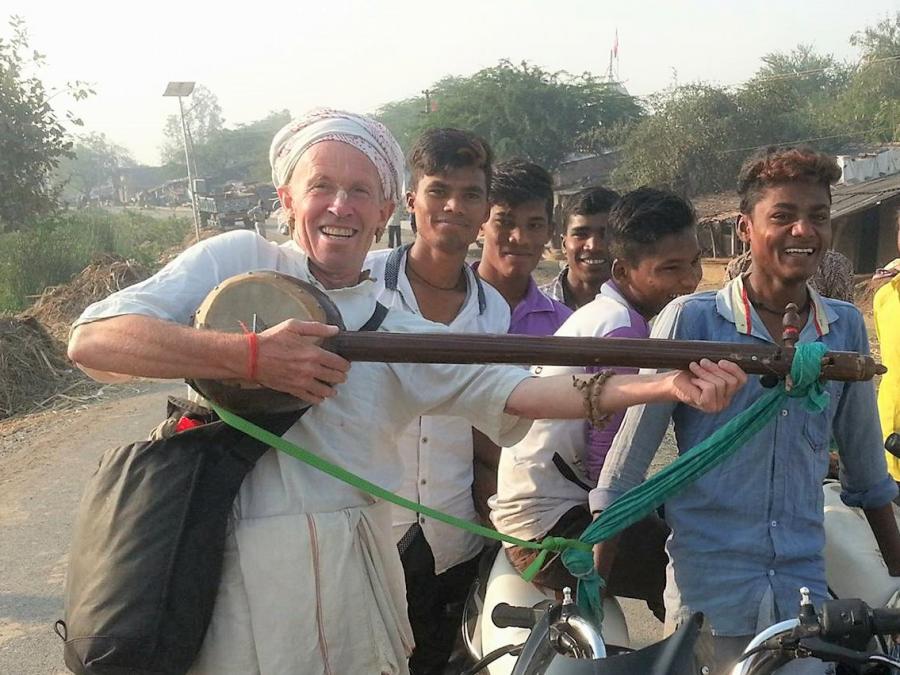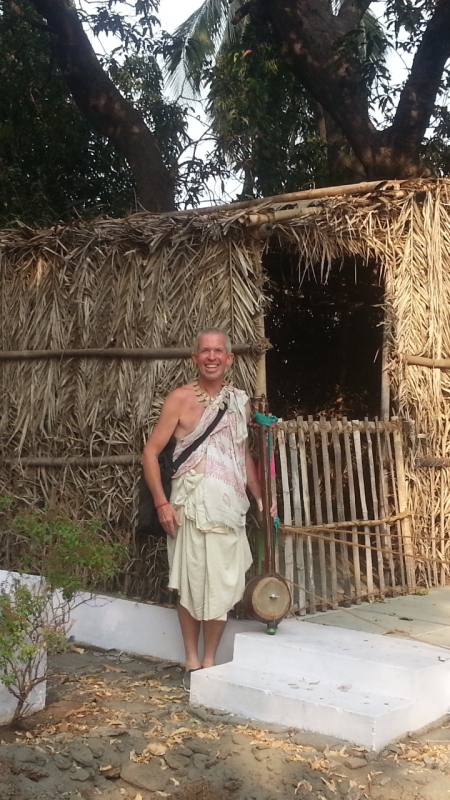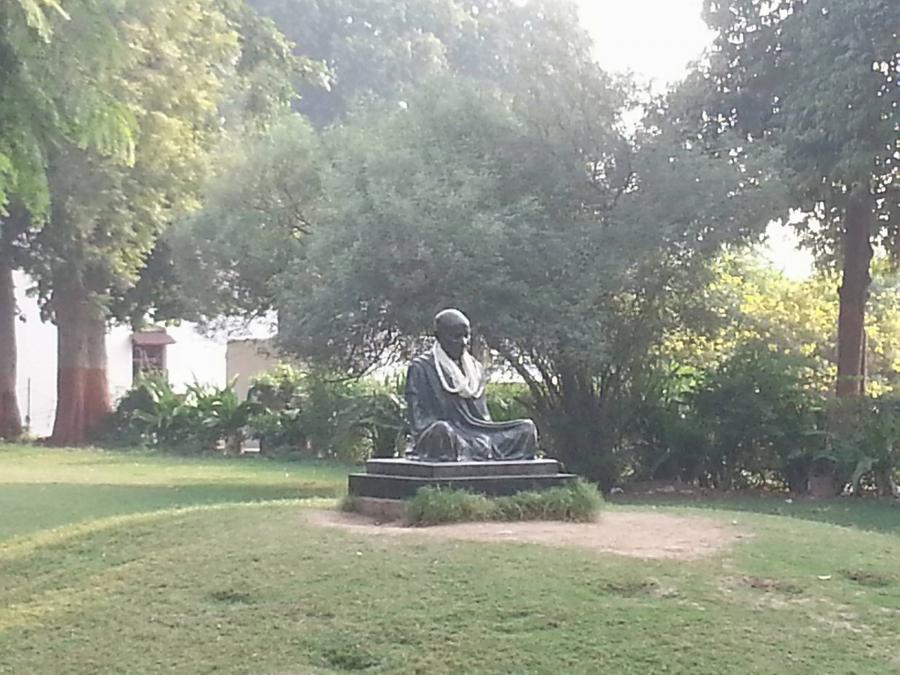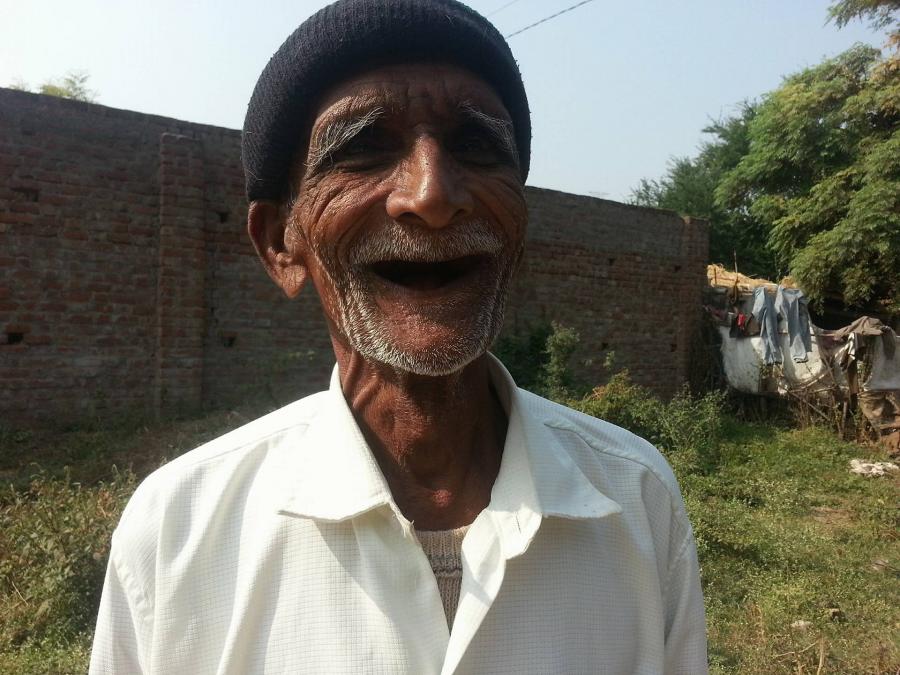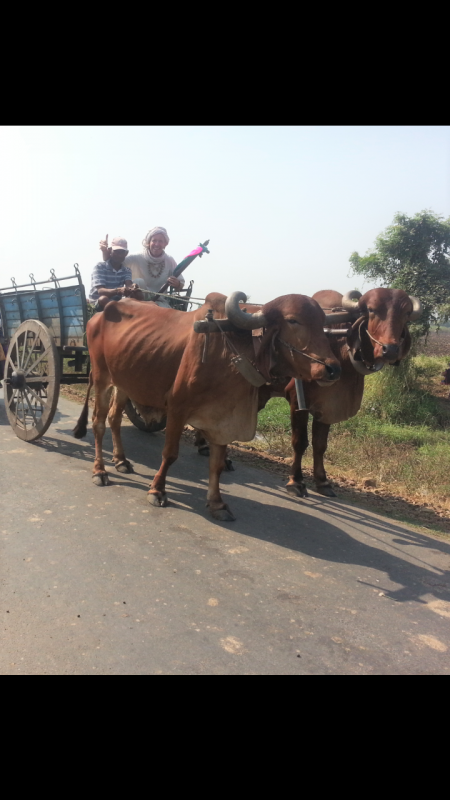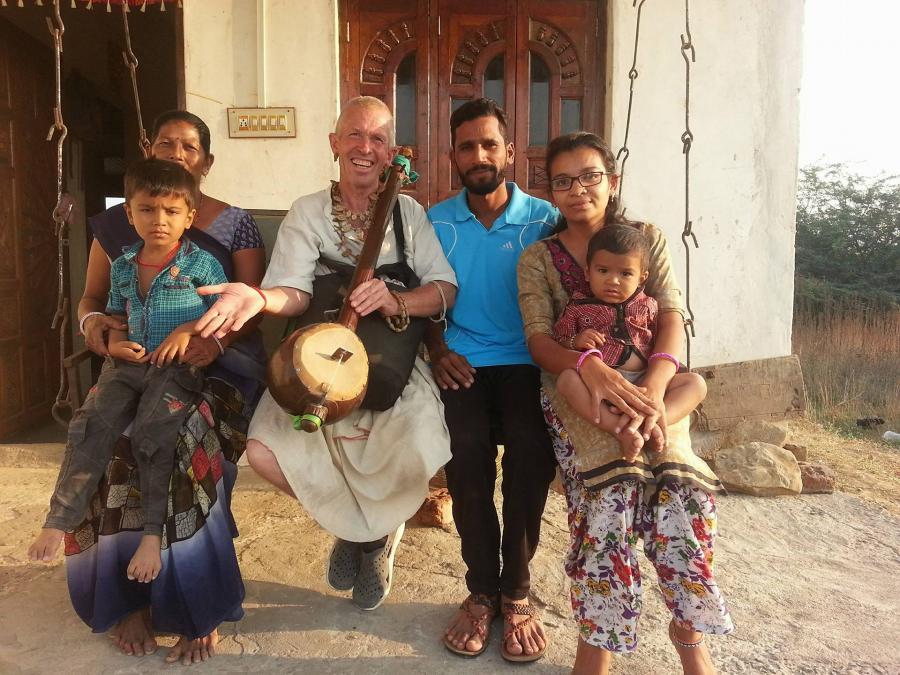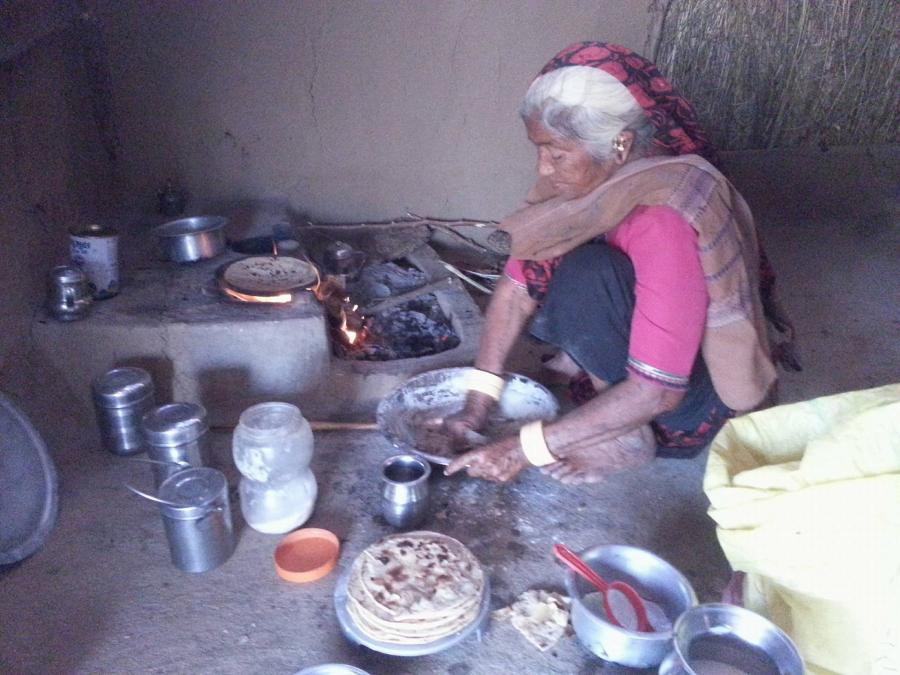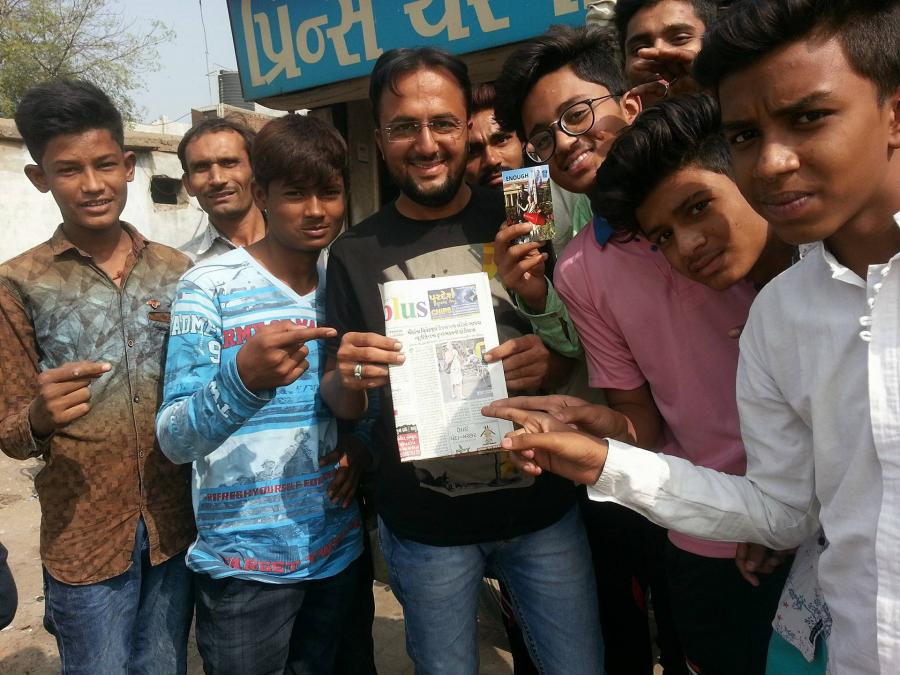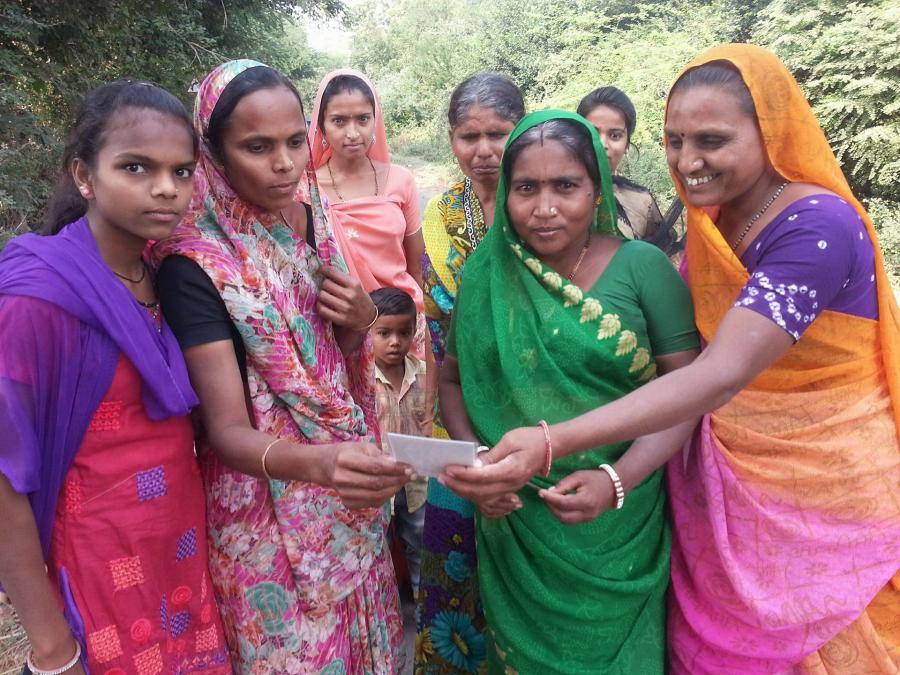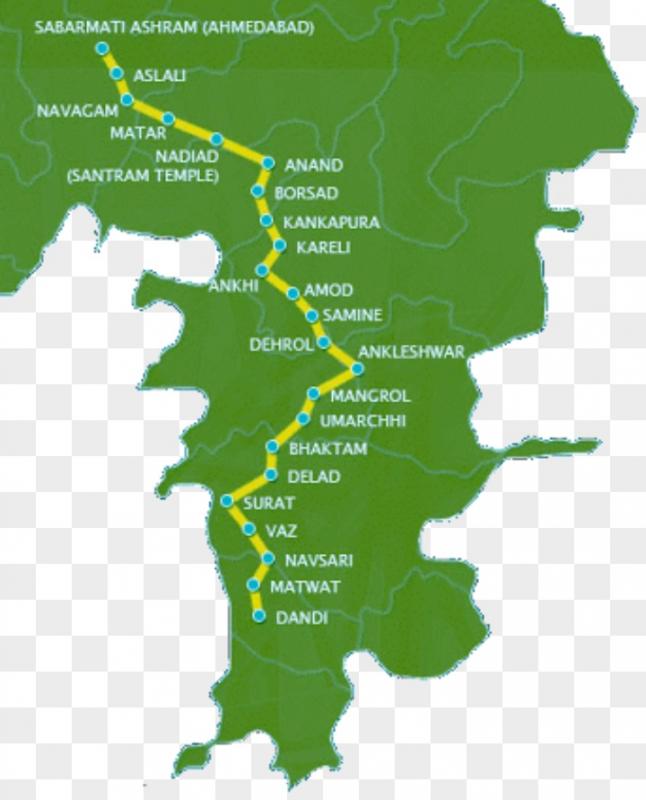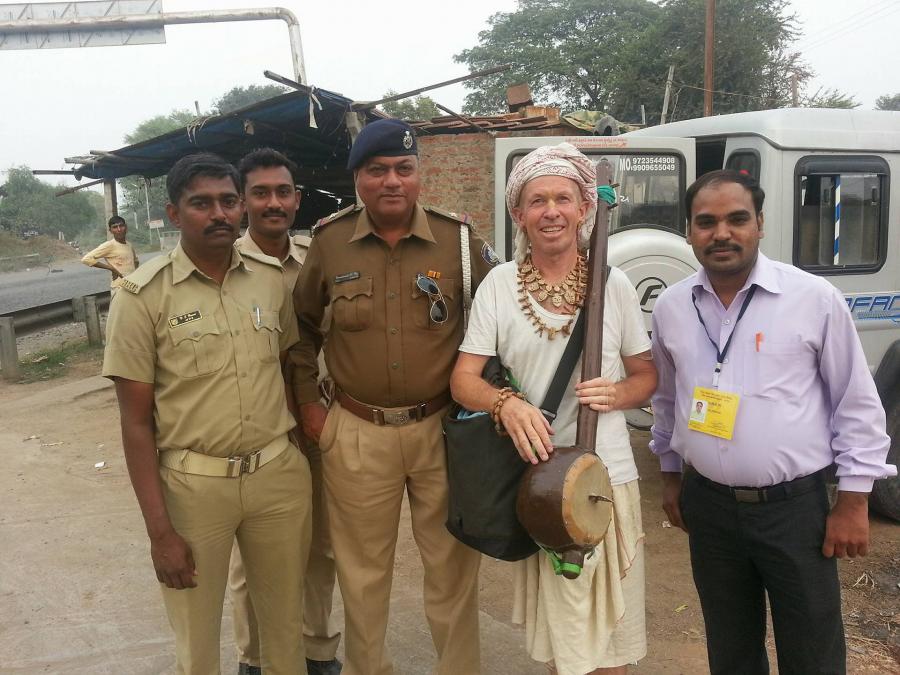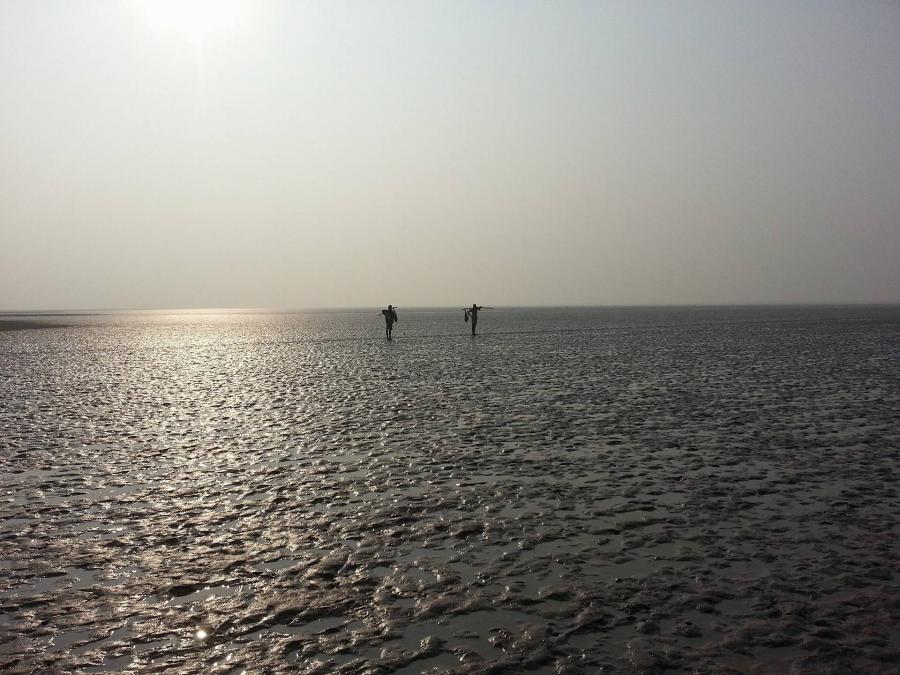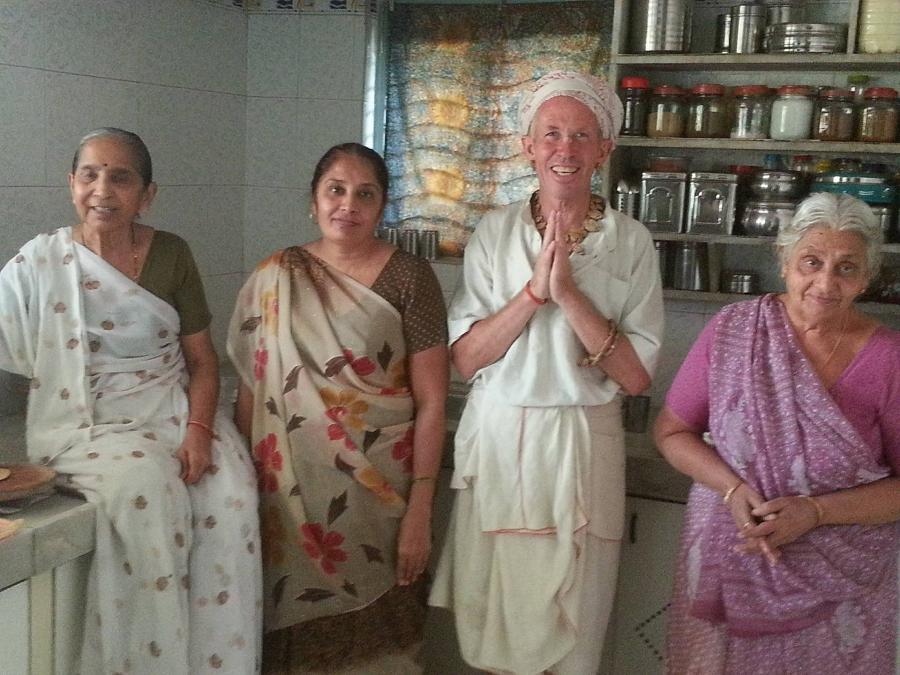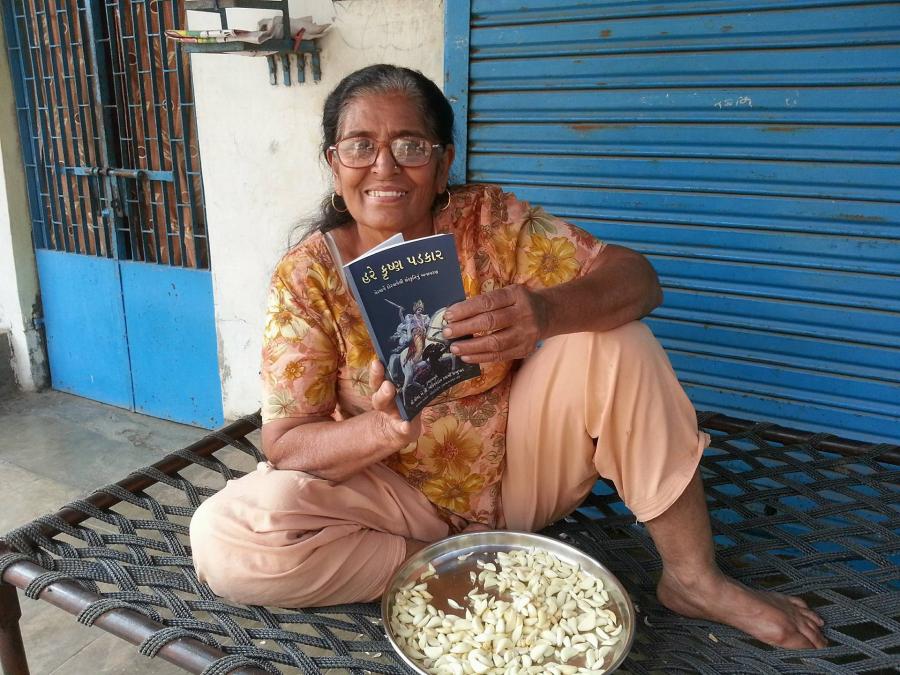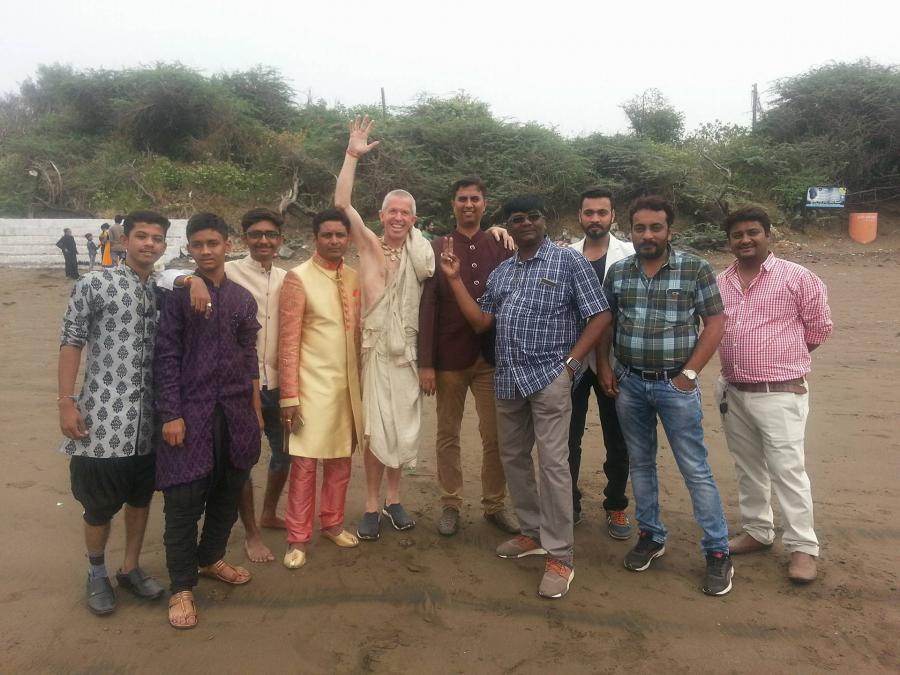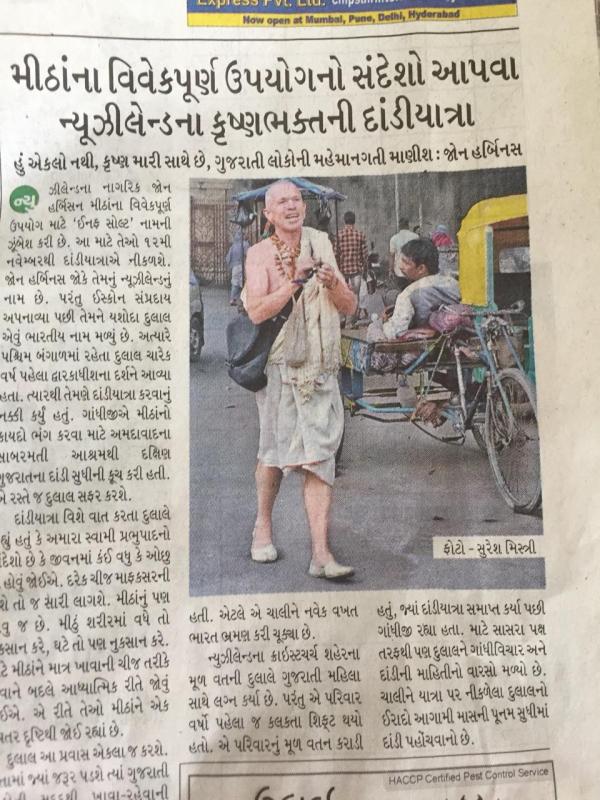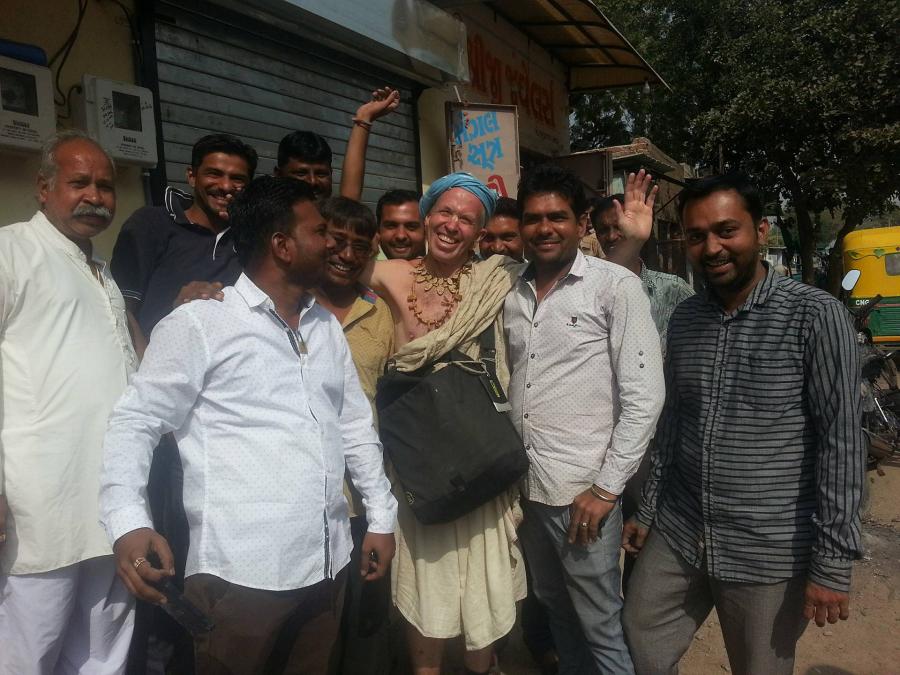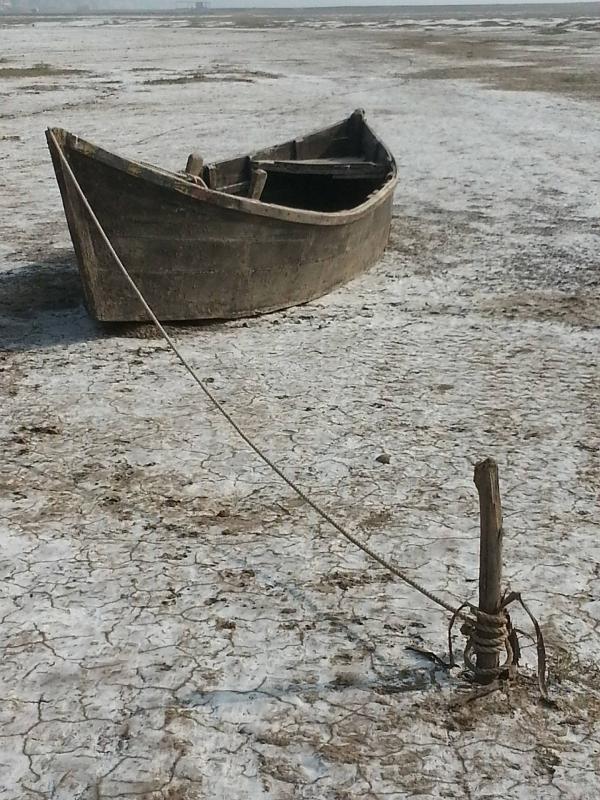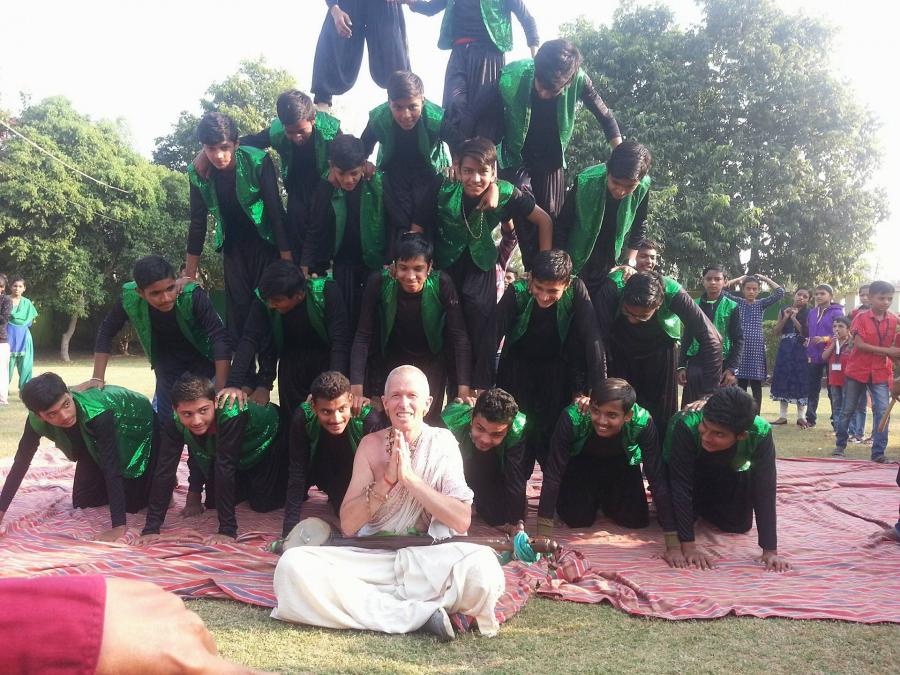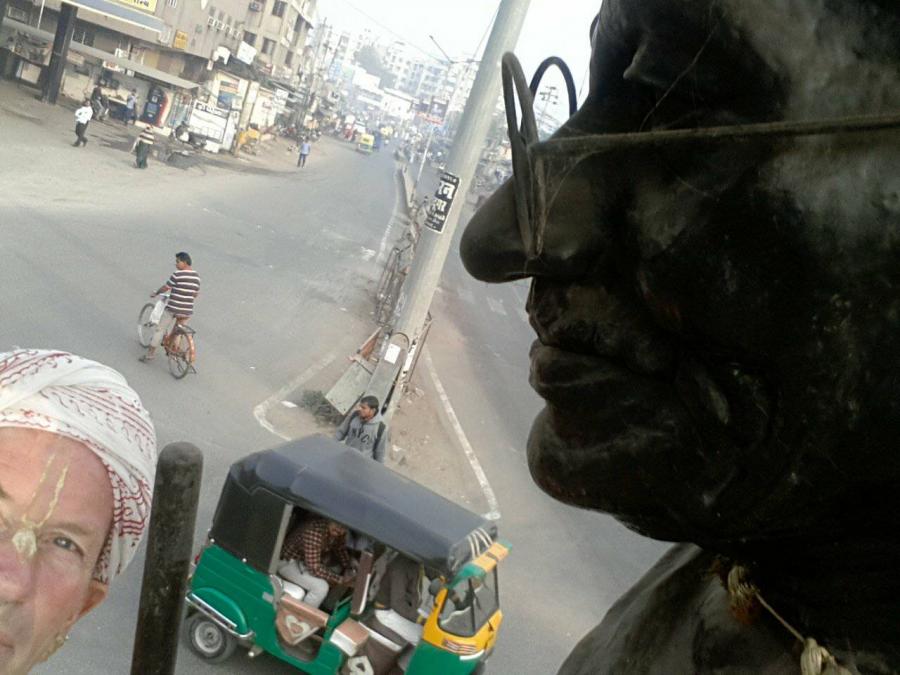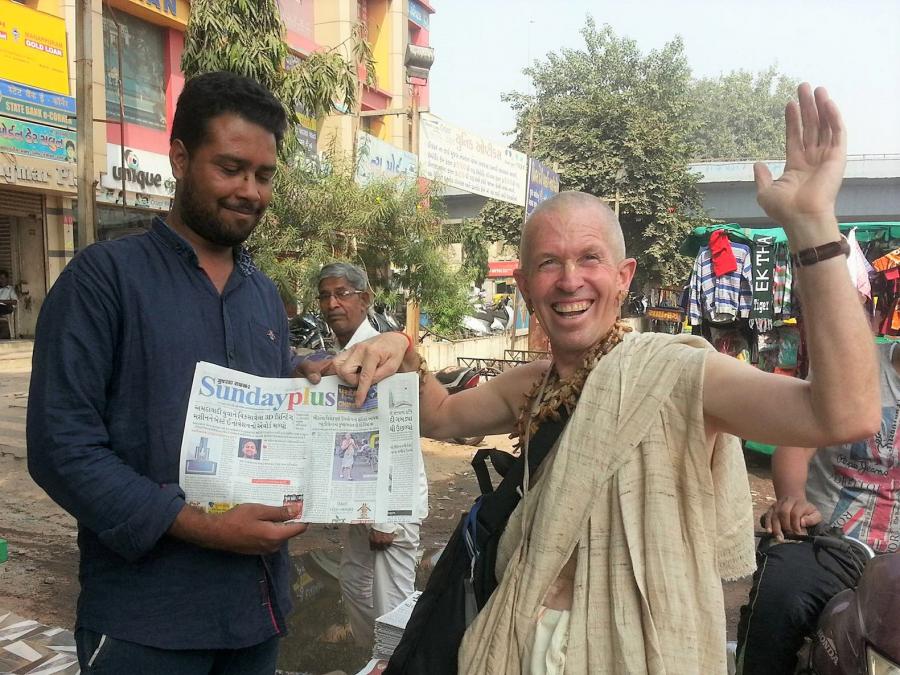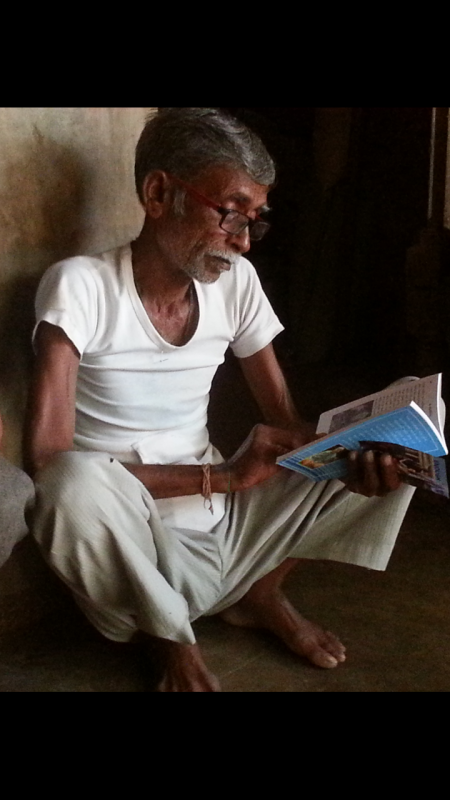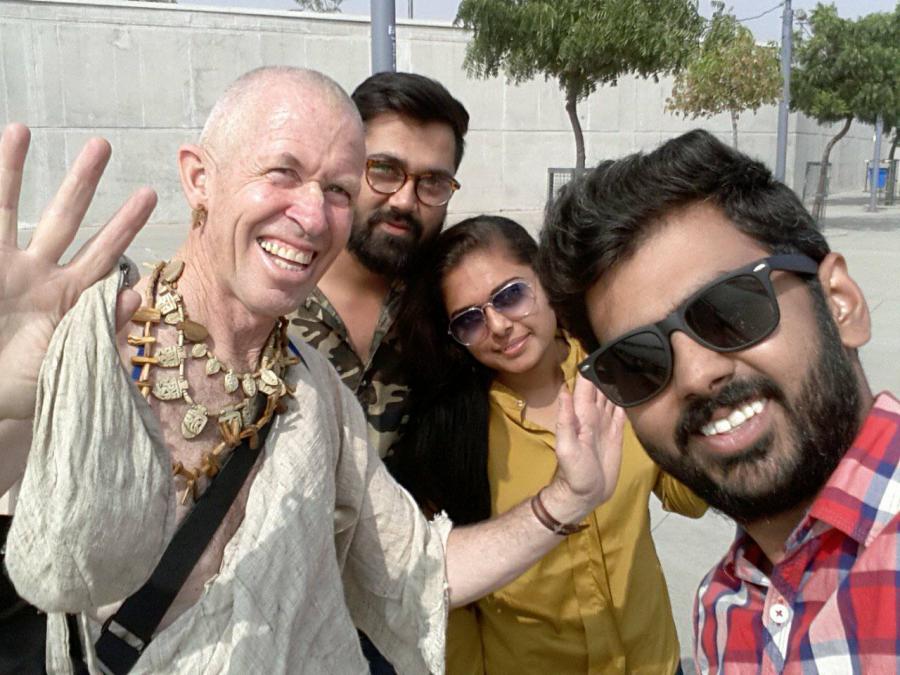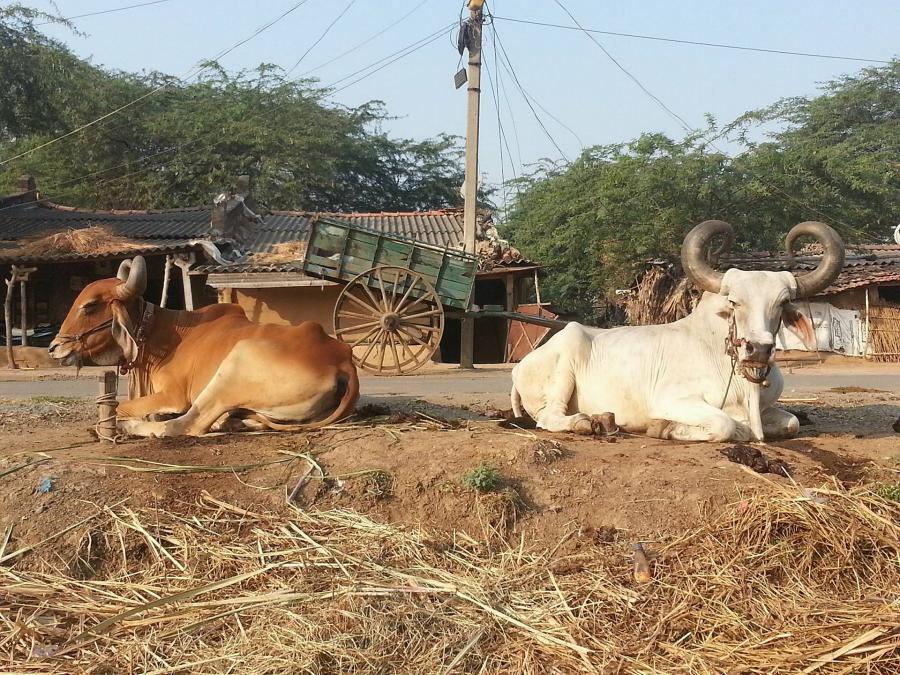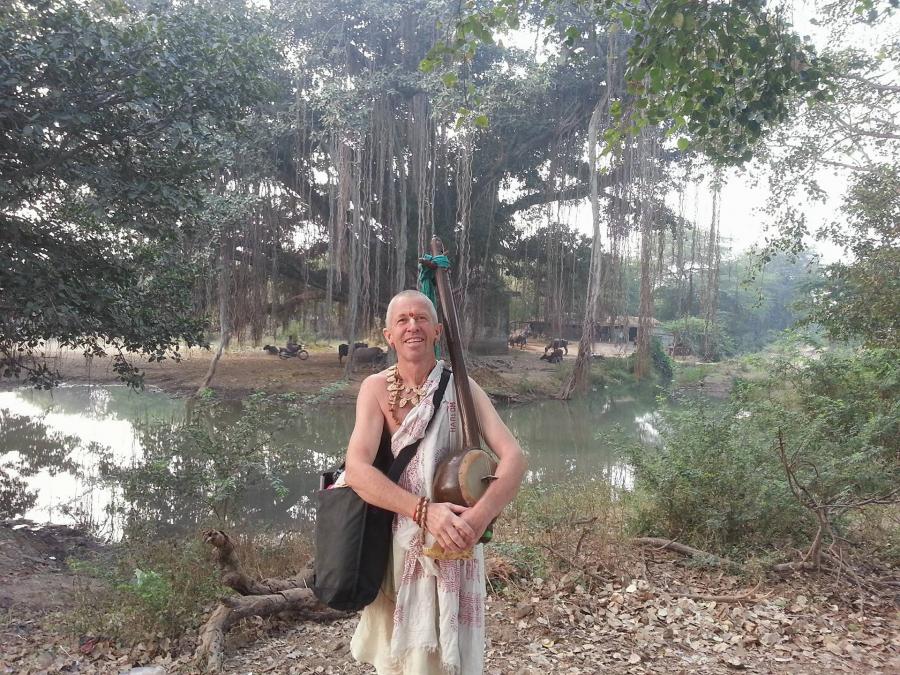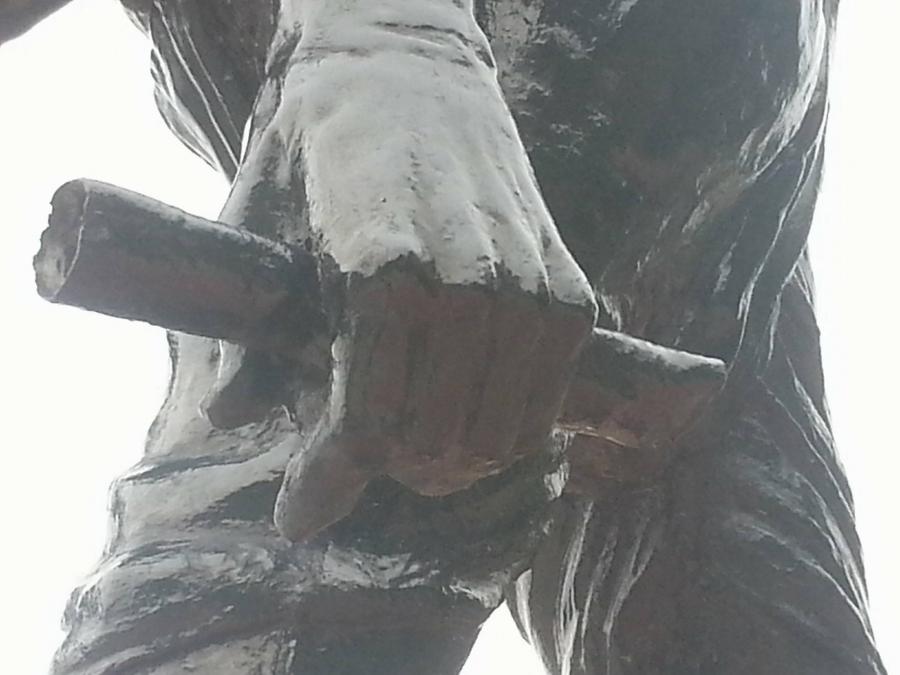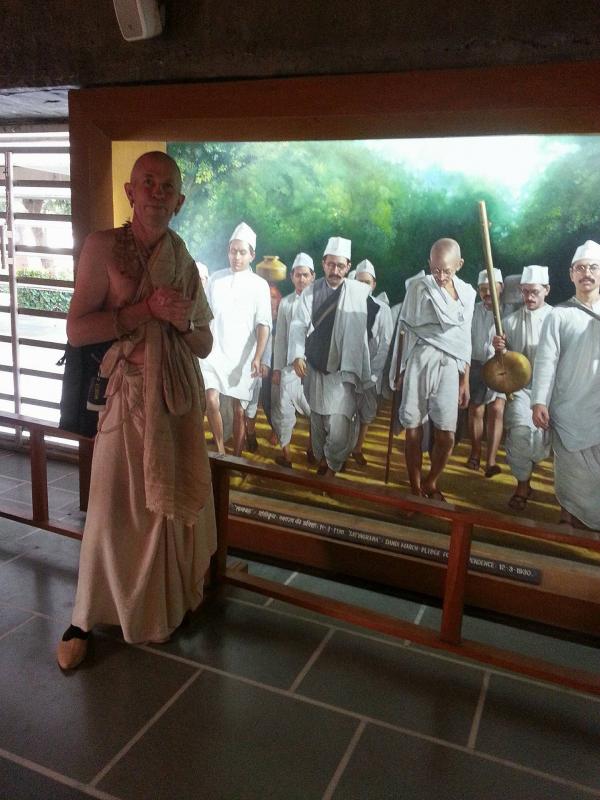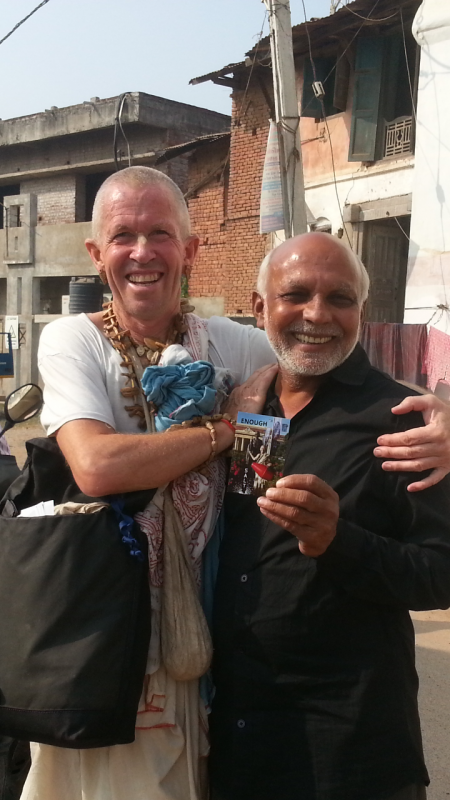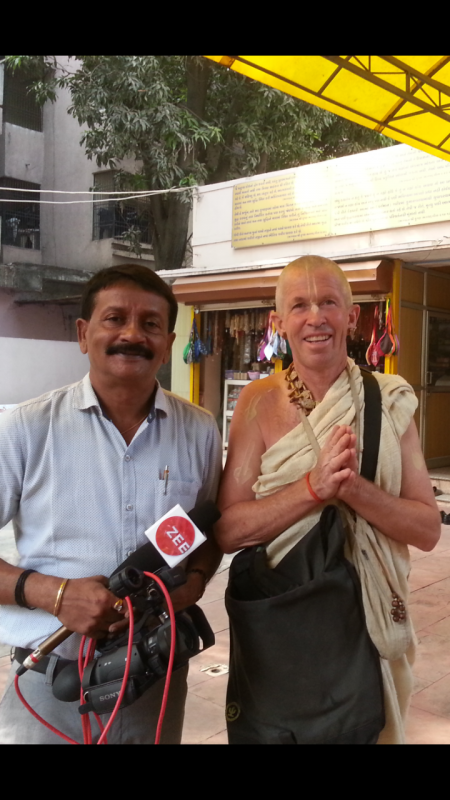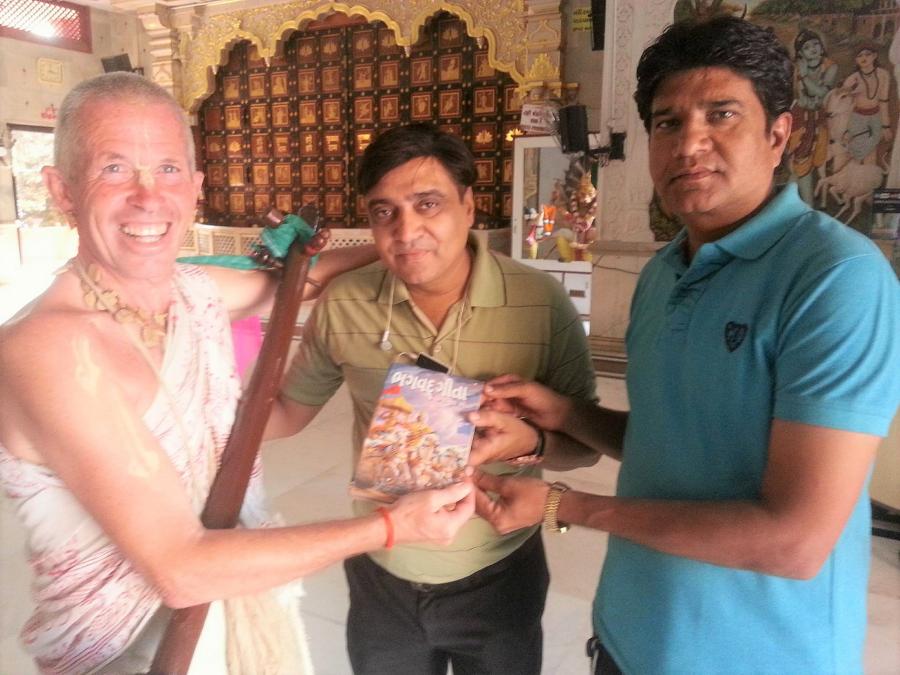By Yasodadulal Dasa
“Sense gratification is just like salt. One cannot take too much or too little but one must take some salt in order to make one’s foodstuffs palatable.” (Srila Prabhupada SB 3.15.8)
Retracing the steps of Mahatma Gandhi during his famous 1930 Dandi Salt Walk
“In 1930 Mohandas K. Gandhi marched on to the world stage with his non violent message to an international audience. His simple act of civil disobedience that defied British rule set India as a nation ablaze with the spirit of non-cooperation. His humble request, “I want world sympathy in this battle of ‘right against might’.” ( 5 April, 1930 – written in Dandi, Gujarat, India.)
Gandhi began a defiant, but non violent march to the sea, the Salt March, in protest of the British monopoly on salt where local salt was heavily taxed by the British (Salt Law). This was his boldest act of civil disobedience against British rule in India.
When Gandhi set out from his Sabarmati ashram in Ahmedabad, he was followed by 78 satyagrahis (one who is loyal to the truth). He said, “My feeling is like that of a pilgrim to Amarnath or Badrinath.” His call to the people of India was to obey a “duty of disloyalty”. He bluntly declared, ‘there was no half way house between active loyalty and active disloyalty, indeed, loyalty to a state so corrupt is a sin, disloyalty a virtue.’ Although his movement was nonviolent his spirit was fiery.
By the time he reached Dandi, hundreds of thousands of Indian nationals had joined his march. They were all wearing white khadi (homespun, handwoven natural fibre cloth representing the principle that Indians could be self-reliant on cotton and be free from foreign cloth, thus the migration of pilgrims was termed, ‘white river.’ Motilal Nehru, President of the Indian national Congress, drew the parallel that it would be as memorable as the historic march of Ramachandra to Lanka. Others compared it with the exodus of the Israelites under Moses.
On 6 April 1930, after 22 days of walking 400 kms and simultaneous propagation of his message, Gandhi reached the sea coast at Dandi, Gujarat. Early in the morning he took a bath in the ocean and then he ceremoniously defied the British salt law by picking up a lump of salt. After that act he became hailed as a ‘lawbreaker’. From that point on the entire nation rose against the British. At the peak of this battle against the ‘black regime’, Gandhi was arrested and in the following month, 950,000 satyagrahis were imprisoned.
Although other key personalities like Sudar Patel and Subash Candra Bose were just as instrumental in the fight and success of Indian independence, it was Bapu’s (Gandhi) strong and determined mood to implement the satyagraha and swadeshi (a movement for national independence in India boycotting foreign goods and encouraging the use of domestic products) concepts that unified the spirit of the Indian people. His idea was to cultivate home made products, cottage industries based on an agrarian society to support the 700,000 villages of India. Although his motivation was driven by political aspirations, his methodology was influenced by India’s strong spiritual roots. Humility, truth, compassion, simplicity and mercy were interwoven in his teachings. The Salt March captivated the hearts of millions of Indians and the whole world turned their faces in sympathy. His lead inspired so many other world leaders to initiate their own fights for freedom from racial discrimination and imperial subjugation.
“Enough Salt! Now take Bhagavad-gita!”
What could I draw public attention to with my little insignificant padayatra which paralleled his Salt March? At the age of 62 (Gandhi was 61) I began the 22 day journey (the same amount of days Gandhi walked) on November 22nd, concluding on the full moon of 4 December 2017. Although I began as one man and my influence over others was that I would also finish alone, still it was important for me to have a message that would take my yatra just that one step further above the worldly limitations of nationalism. My idea was to launch it on to the pure transcendental platform. I began with the simple words, “Enough Salt!”, but it soon became apparent that such a hidden message was too subtle for the general public to pick up on. As the walk progressed and the ISKCON book marathon started coming on, my mantra changed to “Enough Salt! Now take Bhagavad -gita!” It fitted well because Gandhi was a strong advocate of the Bhagavad-gita.
My quest to gain media attention climaxed in the city of Surat, where I was able to fascinate the television media enough to give me ten minutes prime time on Gita Jayanti, November 30th 2017. This strong ‘soundbeat’ on the brihad mrdanga (media press) afforded hundreds and thousands of viewers to remember Krishna and His famous song. With such good publicity I was also able to promote a very favorable impression of Srila Prabhupada and his ISKCON. In this way some satisfaction came in adding my little part to the momentum that Srila Prabhupada had began – “an ISKCON that would change the world in its darkest hour.”
Salt is a product that India could produce on its own shores. Similarly, Bhagavad-gita is also a home grown product that civilized humanity cannot live without. Salt could only be ingested in small amounts but Bhagavad-gita is a product that the world cannot get enough of. Srila Prabhupada wanted us to propagate it and export the goods to every country of the world. Pepper is also a sought after spice grown in India and sent out from there to all parts of the world. Pepper has the potency to increase digestion and cure many diseases of the belly so in this light, the Bhagavad-gita As It Is can be seen as the pepper.
Feeling the presence of Krishna all the way
This enlivening 400km walk took me through many villages, towns and big cities as well as rural areas and forests, where fewer people lived and worked the land. Such an experience reveals the truths of Srila Prabhupada’s purports. Padayatra brings the Bhagavad-gita alive. It becomes a way of life.
Travelling alone forces one to cultivate strong faith and trust in Krishna’s protection. Over the period of one month on the road, not once did I have to ask for food or shelter. I felt the presence of Krishna all the way, guiding and providing. People would question, “You are alone?” “No,” I would say, “Krishna is always with me.” Somehow, others witnessing my total dependence on Krishna would activate “the Krishna’ existing in everybody’s heart. The wholehearted generosity of very pious Gujarati people throughout the journey kept me alive and well. Their persistence to see any guest as an opportunity to serve God was a refreshing reminder of a culture that once pervaded the entire planet.
It is my experience that every time you “wing it out there” taking risk for Krishna’s pleasure, He enjoys in a spontaneous way, and thus reciprocates in a playful and joyous love for His dependent child. It was a great satisfaction to share spiritual wisdom and inspiration with those persons who had an enthusiastic interest.
The language barrier made it sometimes materially difficult, but the simple singing of the Hare Krishna maha-mantra infused a spirit that dissolved all differences. Somehow through God’s grace, we were able to connect and my simple part was just to throw a spark into the dry grass to set it ablaze. I enjoy the elements of variety and surprise that only the padayatra experience can turn on. Sometimes out under the stars on a string chattai (bed) hovering above cow dung spread floors and eating smoked flavoured rotis. At other times, mixing socially amongst the wealthy Patels and vastu mansions feasting on srikhand, Gujarati style pakoras, khadi and rice, concluded by sleeping on palatial beds with en suite bathrooms. Krishna always seemed to play the right card at the right time, even at times, throwing in the Joker. There was always something humorous or astonishing.
Various challenges and tests arose along the way of course. Concerning my health, there was nothing that couldn’t be overcome because of the protection of Lord Narasimhadeva in Sridham Mayapur. Following the route, once I got bewildered and lost in the same vast estuary mudflats that Gandhi himself struggled to cross over in the middle of the night. My survival instinct and confidence that the Supersoul always accompanies the individual as His best friend helped me to persist and push on in times when it was almost ridiculous to continue. Often, all of a sudden, Providence would change and the sky would open up to show a new way through. Every pilgrimage has its tests, but in retrospect those times become the highlights. Treading the path of no return sometimes demands surrendering everything.
The various purposes and benefits of my solitary journey
Such a journey was undertaken as an attempt to share the mercy that one receives in one’s life. The giving of gifts is always satisfying and brings great joy and of course, by giving one receives. This is the lesson from the story of Sudama Vipra, another famous personality who appeared in the same village as Gandhi.
The other purpose of such a trek was centered around the self. It involved a personal endeavor that required introspection and one comes face to face with one’s own strengths and weaknesses. It is important to perform some tapasya or yajna in order to know one’s self and establish one’s relationship with the Supreme.
Another personal slant to my Dandi yatra was focused on searching out the roots to my wife’s ancestry. Karadi was the last village en route to the sea. This is the famous place where Gandhi spent 22 days planning his revolution in a grass hut. It is also the place where the British arrested Gandhi. Coincidentally it is also the place of origin of Ramila’s (my wife) paternal grandfather. He emigrated to New Zealand when he was 21 years old in the very early 1900’s. However, when he returned to India at some stage, he could not go back to New Zealand. In those years he became a freedom fighter in Gandhi’s wake.
I felt compelled to conclude my yatra with a small ceremony. Although the rest of the world would know nothing of my walk or my message, it seemed fitting to place Srila Prabhupada’s special Bhagavad-gita As It Is in the hands of a small statue of the Mahatma, who sits under some beautiful banyan trees that commemorates the spot of his last public gathering in Dandi. At that historic place on that day I felt in my own small way that I had made history and that somehow my humble efforts to uplift the consciousness of humanity in this dark age of Kali was appreciated by the guardian angels of devotion to Sri Hari.

